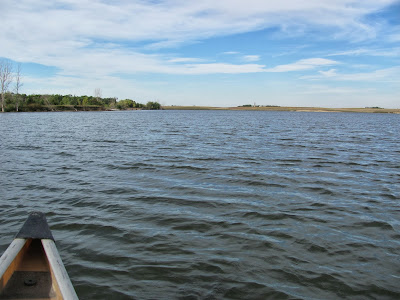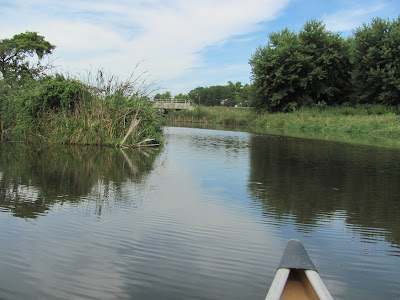As we all packed up our boats and gear in the deepening darkness, it seemed to me that there was a general feeling of satisfaction with doing something good with our paddling friends on a fine evening.
This blog is designed to highlight the paddling opportunities within South Dakota, mainly within a 50-mile radius of Sioux Falls. While Sioux Falls is far from the adventure of coastal regions, there is a certain satisfaction in utilizing the available waterways to observe weather, water conditions, and the landscape along the shoreline. In addition, there is a wealth of animal life on the waters of small South Dakota lakes, rivers, and creeks, including geese, ducks, pelicans, great blue heron, egrets, hawks, owls, perching birds, deer, raccoons, and beaver. Eagles, fox, and coyote are also sometimes spotted.
The sites described are places where I have kayaked over the past few years, mostly in South Dakota but sometimes including locations in Iowa and Minnesota. One of the best sources of information on the accessibility of small lakes is the South Dakota Atlas and Gazetteer, the large map book of South Dakota. Lakes with a public access are generally identified by a boat symbol marking the location of a launching site on public land.
You will notice the menu of paddling locations on the right side of the blog. Each of the postings is linked to one of the areas, and my intention is to provide a continuing review of the places where I paddle. Perhaps these narratives will help readers select waterways of interest to them. Please feel free to offer a comment regarding any of my postings; I would welcome the dialog.
I also maintain a companion blog that describes hiking opportunities within the Sioux Falls area. You can access that blog at: http://hikingsiouxfalls.blogspot.com
Thursday, September 26, 2013
Big Sioux River Clean-Up: September 2013
As we all packed up our boats and gear in the deepening darkness, it seemed to me that there was a general feeling of satisfaction with doing something good with our paddling friends on a fine evening.
Monday, September 23, 2013
Scott Lake: September 2013
Wednesday, September 11, 2013
Split Rock Lake (MN)
The chief attraction of Split Rock Lake is the serene setting and the pleasing range of trees, bushes, and aquatic reeds. Last year, we encountered a deer standing at the water’s edge. This year, we did not see much wildlife: there were a few birds, including a great blue heron that flew up upon our approach. Also, we saw a few groups of carp swimming along in shallow waters on the northern end of the lake.
A hint of fall was in the air with some trees and bushes changing their color. Those first signs of fall are like an electric prod for paddlers: we need to get out on the water more often because a big change will be upon us in only a few weeks. With fall, the long winter is on the horizon!
The full set of photos for this cruise can be found at the following URL:http://www.flickr.com/photos/jayheath/sets/72157635479814157/

























































